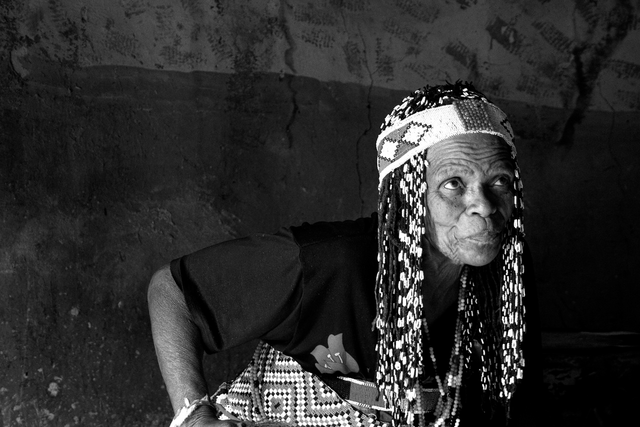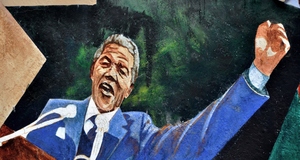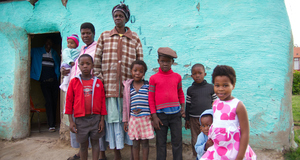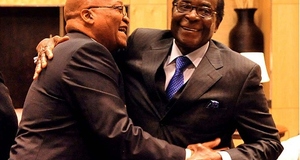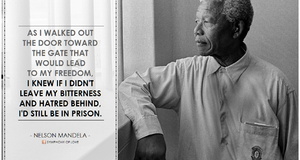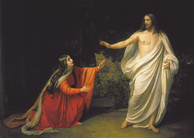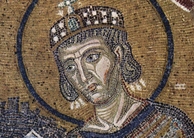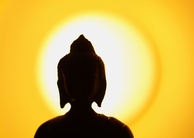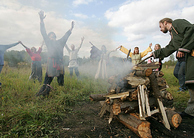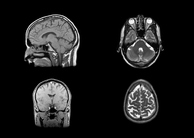The Influence of Social, Political, and Economic Factors on the Development and Form of Zulu Religious Activity in the 19th and 20th Centuries
By
2011, Vol. 3 No. 07 | pg. 1/2 | »
KEYWORDS:
"Lomhlaba Unzima, Lohmhlaba – This world is a harsh place, this world" - Zulu proverb (Roberts 2006:101) This proverb sadly encapsulates the reality of existence for the Zulu people in the last two centuries. Ripped from their positions of power and tossed into the pits of despair, life as they once knew it changed drastically. Nelson Mandela once said that ‘social transformation cannot be separated from spiritual transformation’ (Heuser 2005:363). Religion does not develop in a vacuum, it responds and transforms in step with social, political and economic factors. No religious world can remain the same forever and in response to this traditions undergo transformation processes, answering to the needs of the community. New places, roles and powers gain recognition whilst old places, roles and powers gain new meanings (Lawson 1984:9). This essay examines how Zulu religious activity changed in response to the events of the 19th and 20th century by showing how new religious forms emerged and how old religious systems transformed. First of all one must acknowledge that the story of any community needs to be understood within its own unique political and cultural context (Prozesky 1995:3). So what is the ‘Zulu context’? What political and social situations did the community face? It helps to go back to the earliest known history of the Zulu people or rather, their ancestors. Around 2000 years ago a new group of people began to arrive in South Africa. Unlike the native San and Khoikhoi, these new people had considerable metal-working and farm skills and spoke a new set of languages of the bantu family. Eventually these bantu-speaking people would come to populate and dominate practically all the arable land in South Africa (Prozesky 1995:5). As ancestors of the Zulu, this migration is significant. Already from their earliest forbearers the Zulu had inherited a history of domination and power. This dominative power reached its peak in the 19th century with the creation of the Zulu Kingdom, a powerful centralised territory of warriors and kings. In the process of creating this state the Zulu had usurped smaller tribes and conquered their lands leading to a social crisis known as the mfecane (Janzen 1992:35-36). At this time the Zulu had never been mightier. Their majestic domain covered mountains, rivers and coastlines (Laband 1997:3). This was truly the golden age of the Zulu. Yet a change of fortunes awaited the Zulu people, a fate which years before was almost inconceivable. After all every peak is followed by a fall and the higher the peak, the greater the fall. From 1652 Europeans had begun to trickle into South Africa, followed by substantial waves in 1795 and 1806 (Prozesky 1995:5). It was not long before the Voortrekkers of the mid 1800s began to make inroads into what is now known as the Orange Free State and the Transvaal, engaging and humiliatingly defeating the Zulu (Janzen 1992:35-36). In the late 1800s another devastating defeat was on the horizon, the Anglo-Zulu war of 1897. Indeed the defeat was truly calamitous as it heralded an end to everything that the Zulu had prided themselves on; independence, self-government and power (Knight 2003:8). In 1885 Zulu life was further disrupted by the discovery of gold near Johannesburg and the resulting numbers of young men who were recruited to go in to work in the mines (Lawson 1984:44). The need for miners also led to an emergence of a ‘major labour migration pattern’ whereupon many foreigners entered South Africa for employment (Janzen 1992:35-36). Sundkler (1976:311) terms the resulting social situation as an ‘alienation crises’. The mighty Zulu kingdom was in disrepute. Their warriors defeated and belittled and their land snatched from them. Where they had once reigned supreme, they were now debased to being servants on their own lands (Janzen 1992:35-36). To add insult to injury Europeans had appropriated their mineral wealth and had imposed controls to hinder Africans benefiting from the burgeoning urban industrial economy on their own volition (Kiernan 1995:116-117). Instead legislation such as the native lands act of 1913 pushed them into townships and bolstered by the urban areas act of 1923- completely segregated them (Sundkler 1961:34). Thus one can understand the context of the Zulu at this period as being a society in disarray, a tale of broken homes, labour camps, mines and townships (Janzen 1992:35-36). A story of subjugation and oppression so keenly experienced by those who had been pushed into the status of second class citizens in their own lands (Prozesky 1995:1). Yet Through all this hardship the Zulu religious system evinced its ability to transform and to respond to the challenges posed by the 19th and 20th century. Now that the social and political context has been established one must examine how religious activity responded to this. One general way that religion responds to external factors is by developing new beliefs and adopting new forms. The oppression suffered by the Zulu was fertile ground for emergence of new movements, namely independent churches (Lawson 1984:47). When missionaries first made contact with the Zulu, during the aforementioned peak of the Zulu kingdom, they had limited success in conversion. Kiernan (1995:75) notes that there is little good reason why anyone would convert to another religion when their own religion is ‘anchored in a stable and satisfying way of life’. To put it in other words, there was nothing for the Zulu to gain from conversion at this time. However as time passed the Zulu began to exploit missionary activity for the education it offered but conversion was still seen as almost treason like (Kiernan 1995:76). As previously mentioned by the turn of the 20th century Zulu society was experiencing a great crisis. There was now some kind of a benefit associated with conversion, as the current religious system was tied to a social system which was in ataxia (Kiernan 1995:75). Nevertheless the Zulu would not be adhering en-masse to the Christianity that white missionaries gave them; on the contrary they would be following uniquely African Christian movements. The Independent churches are expressions of African Christianity but they also provided alternative messages that showed a way out of the crisis that the Zulu were experiencing (Lawson 1984:46). The most popular and influential of these new movements were generally Zionist churches although one church in particular, the Nazareth Baptist church, was especially significant. The Zionist churches known in Zulu as ama-ziyon, have their origin in Zion city, Illinois (Sundkler 1961:55). The Nazareth Baptist Church is also known as the Shembe church after its charismatic founder Zulu Prophet Isaiah Shembe (Lawson 1984:45). The original reason why the independent churches began to secede from the Mission Churches, was the latter’s generally reluctance to ordain Africans and the frustration this caused (1995:117). It was a further reminder to the Zulu people of their constrained autonomy. The chance to break away and form new movements presented an opportunity for the Zulu people to assert their right to self-government, if only on a religious basis. As Black trade unions were outlawed (Sundkler 1961:34) and no positions of civic or political leadership were allowed, religion presented the opportunity of self-leadership in some form (Sundkler 1961:100). In the case of the Zionist Churches this can be taken a step further, they allowed for the imitation of the strong leadership once exhibited by Zulu Kings. The bishops and presidents of the churches modelled themselves on Zulu Kingship patterns (Sundkler 1961:58). Additionally the relationships between the church and its followers echoed the relationship between king and nation (Sundkler 1961:102). The Zionist churches also allowed Zulu chiefs to ‘craft new narratives of political legitimacy’ in an age where they had little practical ruling power (Cabrita 2010:21). The izibongo chiefly praises of the past seemed wildly distant in the face of defeat instead, Zulu Pride was kept alive through hymns (Cabrita 2010:24). Although the Zulu Kingdom had fallen, patriotism could still be kept alive through a binding religion (Cabrita 2010:21). Thus, the Zionist Churches were a retreat and a reminder of a noble history (Sundkler 1961:102). The independent Churches also tended to have a revolutionary element (Lawson 1984:47). New religious movements have served as vessels for political intentions such as the demand for independence, equality, freedom and nationhood (Lawson 1984:7). One can also note the significance of religion in the history of the ‘struggle or liberation’ (heuser 2005:363). Cabrita (2010:22) indicates that Isaiah Shembe had nationalist aspirations for the Church, which is clearly exhibited in Church literature such as hymn 17 which poignantly urges political action ‘they wanted to take away, the kingship of ancient times, wake up wake up, you Africans’ (Gunner 2002:30). As a result, many including the apartheid government who set out to clamp down on independent movements, saw the church as little more than a ‘political movement in religious garb’ (Lawson 1984:7). Although this is an over-simplistic view of the independent Churches, one cannot ignore the political effects of the movements. The Zionist churches provided Zulu society with a new means to economic advancement through the taboos it preached. Sundkler (1976:43) quotes Mrs La Roux, the wife of P.L. Le Roux, who travelled with her missionary husband as part of the ‘apostolic faith mission’. She writes in her journal “their masters opposed us more because the native was paid with tobacco, now he would not accept it. He had to have money or clothes. Used to be slaves of drink and tobacco. Glory to God”. Instead of receiving items that were damaging such as tobacco, they now received things that could improve their lifestyle and possibly give them greater leverage. One can observe this a kind of ‘waking up’ for the Zulu people, as described in the aforementioned hymn. They were ‘waking up’ to their role in a capitalist economy. In this way Zionism was a bold challenge to the social, economic system and political that had been imposed on them (Sundkler 1976:43). One central feature of Zionist dogma is the focus on the apocalypse that is the imminent return of Jesus, who will right all wrongs and bring justice and salvation. Such apocalyptic visions were rife after the Boer War (Sundkler 1976:43-44). This is significant as the Zulu had found themselves lacking any earthly hope (Sundkler 1976:311).This is illustrated in hymn 21 of the Shembe Church ‘the cry of desolation’ which is to be understood in the context isizwe esimnyama- the despair of the black nation trapped in oppression. ‘Our land is broken into pieces, not a soul lives in our homesteads, we are widows and orphans, oh Lord of the Sabbath, why have you deserted us?’ (Gunner 2002:30). It makes sense then that the Zulu began to look beyond this earthly plain and seek an explanation for their hardship. A Lord, who appears to have deserted them yet was posed to return and restore them to glory, not only provided such an explanation but also gave them hope of a justice beyond oppression. One can understand the popularity of the independent churches as playing a key role in the search for cultural authenticity and identity (Kirby 1994:57) The rise in the number of independent churches directly correlates with the harsh effects of the land legislation and it is notable that Witwatersrand, where the restrictions were strongest, became an epicentre of independent churches (Sundkler 1961:33-34).Continued on Next Page » Suggested Reading from Inquiries Journal
Inquiries Journal provides undergraduate and graduate students around the world a platform for the wide dissemination of academic work over a range of core disciplines. Representing the work of students from hundreds of institutions around the globe, Inquiries Journal's large database of academic articles is completely free. Learn more | Blog | Submit Latest in Theology |

